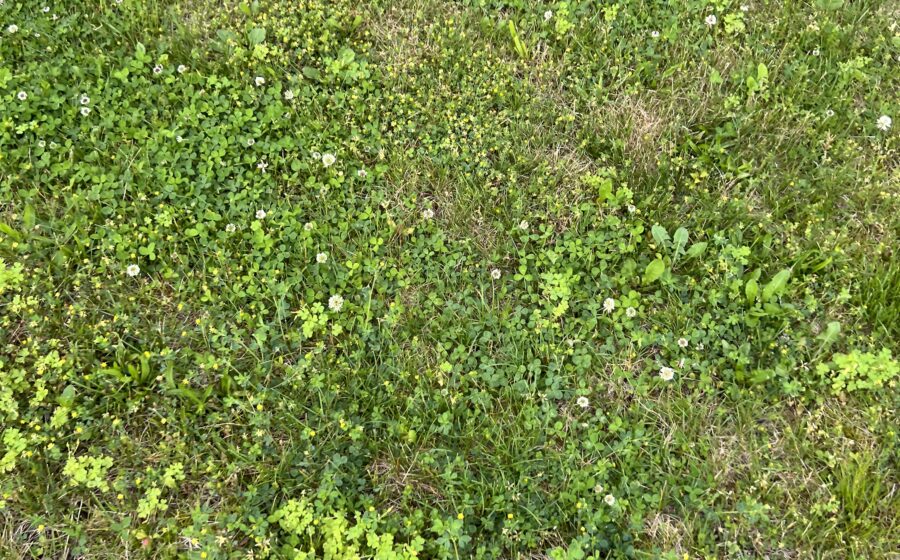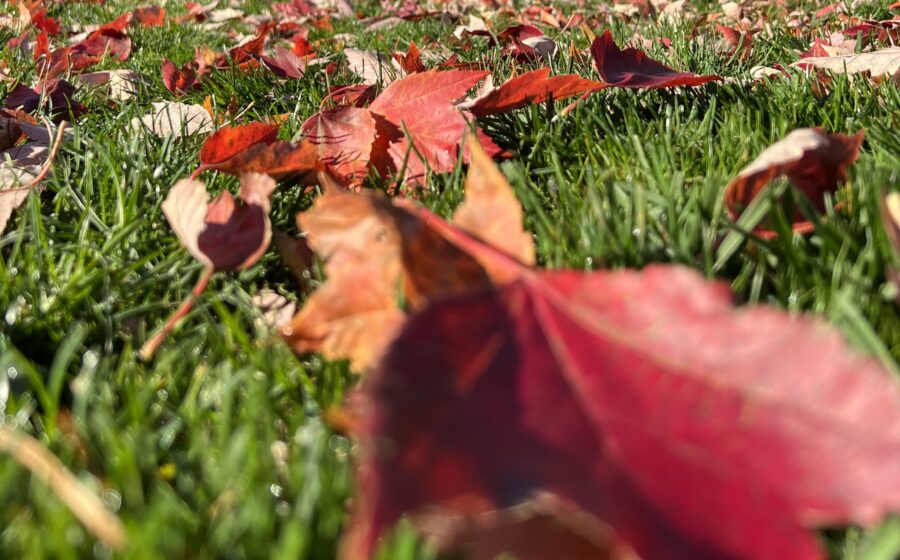- (610) 507.8873
- contact@stoutlawncare.com
Taming the Weeds for a Healthier Lawn
Is your lawn looking more like a weed patch than a lush green oasis? You’re not alone! Check out this picture of a patch of grass that’s hosting nearly every weed known in our area.
Why Weed Control Matters:
![]() Healthy Turf: Weeds compete with grass for sunlight, water, and nutrients. Effective weed control ensures your lawn gets what it needs to thrive.
Healthy Turf: Weeds compete with grass for sunlight, water, and nutrients. Effective weed control ensures your lawn gets what it needs to thrive.
![]() Aesthetic Appeal: A weed-free lawn looks better, making your outdoor space more inviting and enjoyable.
Aesthetic Appeal: A weed-free lawn looks better, making your outdoor space more inviting and enjoyable.
![]() Disease Prevention: Some weeds can harbor pests and diseases that might spread to your grass, weakening it further.
Disease Prevention: Some weeds can harbor pests and diseases that might spread to your grass, weakening it further.
![]() Easier Maintenance: Fewer weeds mean less work. Regular mowing and maintenance become simpler and more efficient.
Easier Maintenance: Fewer weeds mean less work. Regular mowing and maintenance become simpler and more efficient.
Top Tips for Effective Weed Control:
![]() Regular Mowing: Keep your grass at the right height to shade out weed seeds. Mowing too short can stress your grass and make it easier for weeds to take hold.
Regular Mowing: Keep your grass at the right height to shade out weed seeds. Mowing too short can stress your grass and make it easier for weeds to take hold.
![]() Proper Watering: Water deeply and infrequently. Shallow watering encourages weed growth, while deep watering strengthens grass roots.
Proper Watering: Water deeply and infrequently. Shallow watering encourages weed growth, while deep watering strengthens grass roots.
![]() Aeration/Overseeding: Aerating and overseeding your lawn will improve soil health and introduce desired grasses, making it harder for weeds to compete.
Aeration/Overseeding: Aerating and overseeding your lawn will improve soil health and introduce desired grasses, making it harder for weeds to compete.
![]() Use Herbicides Wisely: Selective herbicides target specific weeds without harming your grass.
Use Herbicides Wisely: Selective herbicides target specific weeds without harming your grass.
![]() Regular Fertilization: A well-fertilized lawn is more competitive against weeds.
Regular Fertilization: A well-fertilized lawn is more competitive against weeds.
Remember, the best defense against weeds is a healthy, dense lawn. Invest in proper lawn care, and those pesky weeds won’t stand a chance!
Importance of Fall Lawn Care
- Prepare for Winter Resilience: Fall fertilization provides your lawn with the essential nutrients it needs to build strong, healthy roots before winter sets in. By strengthening the root system now, your lawn will be better equipped to withstand harsh winter conditions, including freezing temperatures and potential stressors like snow mold and ice damage.
- Promote Spring Green-Up: Properly fertilizing your lawn in the fall sets the stage for a vibrant and lush spring green-up. As temperatures rise and the growing season begins anew, your lawn will already have the necessary nutrients stored in the roots, ensuring a faster and more vigorous growth come springtime.
- Weed Suppression: Fall is the ideal time to tackle those persistent weeds. As temperatures drop, weed growth slows down, making them more susceptible to weed control treatments. Applying weed control measures in the fall not only helps eliminate existing weeds but also prevents new weeds from taking hold in the following seasons.
- Reduce Spring Workload: By focusing on fertilization and weed control in the fall, you effectively reduce the workload and stress on your lawn during the busiest time of the year – spring. With a healthy lawn already established, you’ll spend less time combating weeds and nurturing struggling grass, freeing you up to enjoy your outdoor spaces.
- Enhance Overall Lawn Health: A well-fertilized and weed-free lawn is a healthy lawn. Fall provides the perfect conditions for grass to absorb and utilize nutrients effectively. This not only ensures better growth and color but also strengthens the lawn’s resistance against diseases, pests, and environmental stressors.
- Maximize Fertilizer Effectiveness: During the fall, cool-season grasses experience a surge in growth and absorption of nutrients. Applying fertilizer at this time maximizes its effectiveness, as the grass actively takes up the nutrients and stores them for winter. Additionally, nutrients applied in the fall remain in the soil and become available to the grass in the following spring.
- Environmental Benefits: By implementing fall fertilization and weed control practices, you’re promoting a healthier ecosystem overall. A dense and robust lawn helps prevent soil erosion, filters pollutants, and absorbs carbon dioxide from the atmosphere, contributing positively to the environment.



